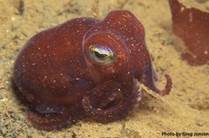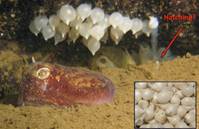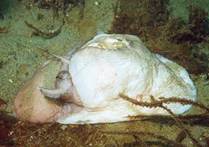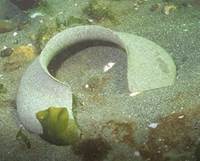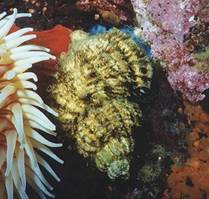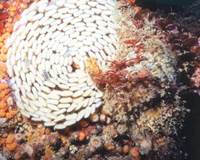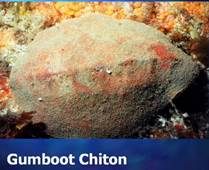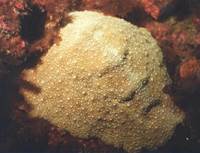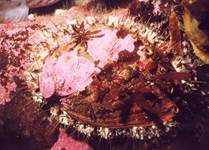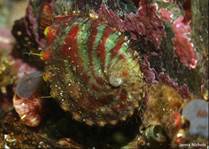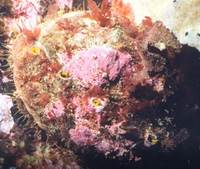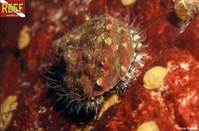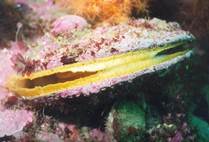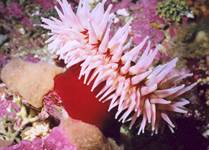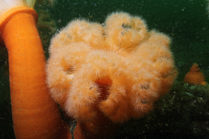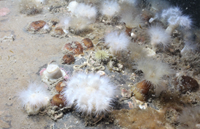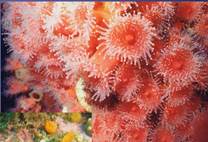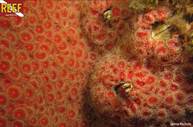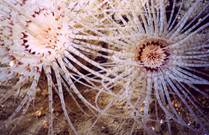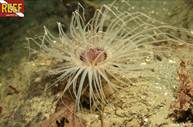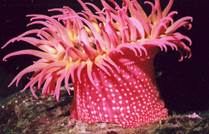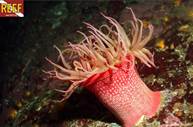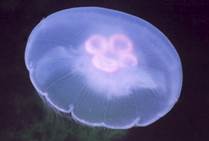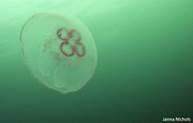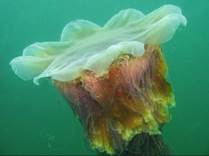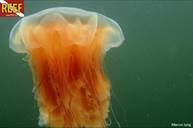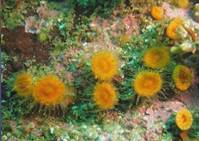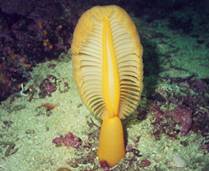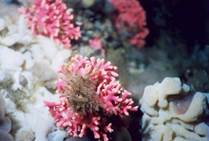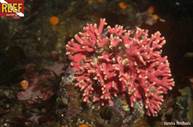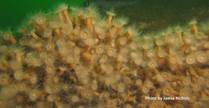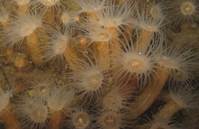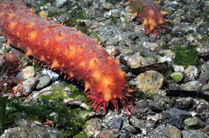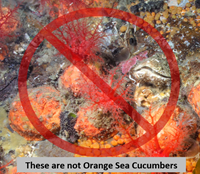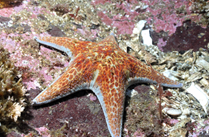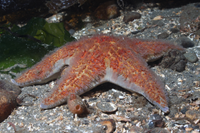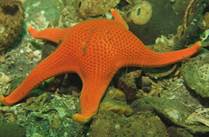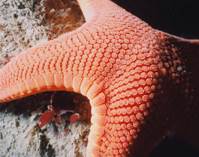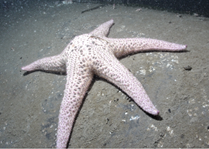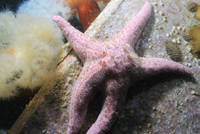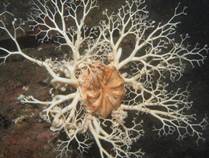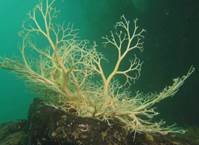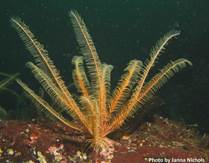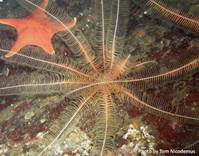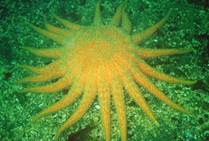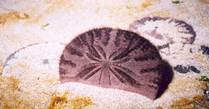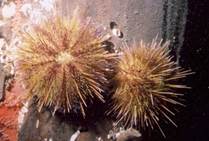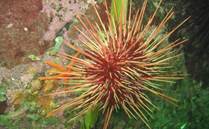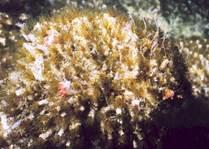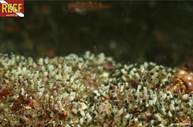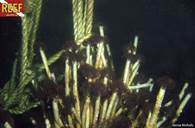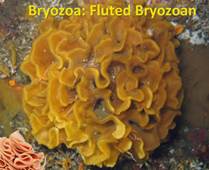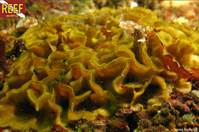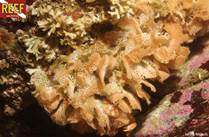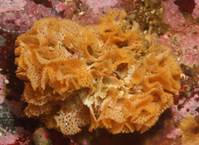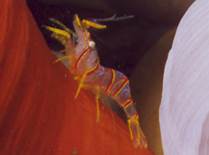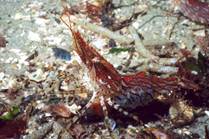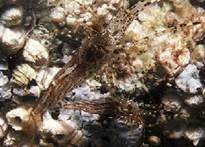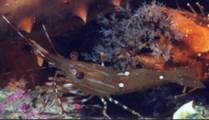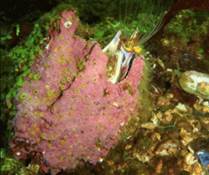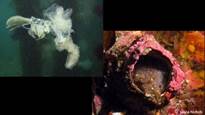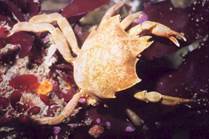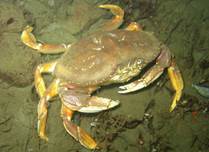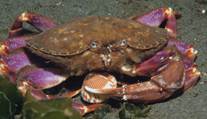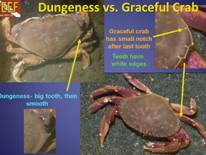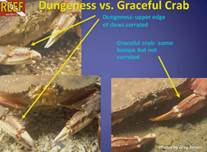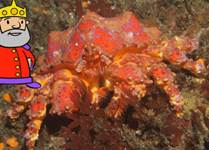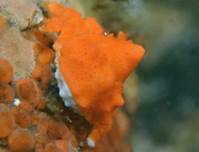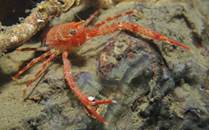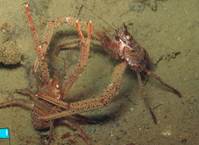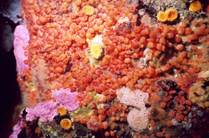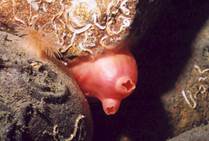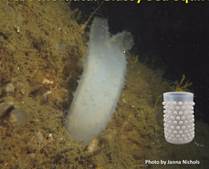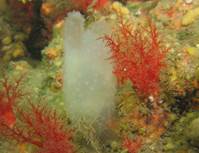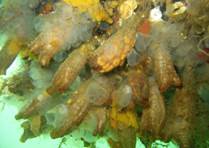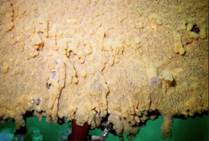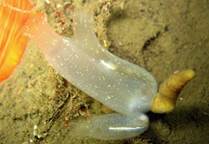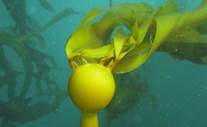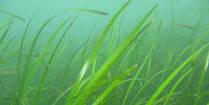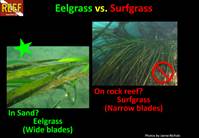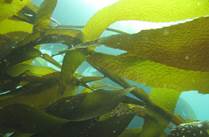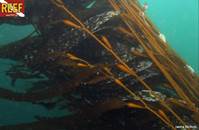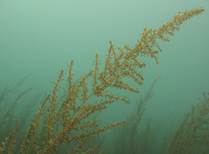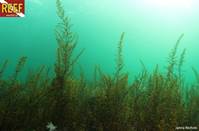PNW Invertebrate List
Contents
Mollusca (Nudi/Octo/Chiton/Scallop),
Cnidaria (anemone/coral/zoanthid/seapen)
Lion's Mane Jelly (was Sea Blubber)
Echinodermata (cucumber/star/dollar/urchin)
How to use this file
This resource is best viewed in web layout mode. Enabling the navigation pane also makes it easier to jump between sections. Both can be enabled from the view tab on the ribbon (assuming you are using Microsoft Word).

Alternatively, a full list of all species is included in the table of contents at the beginning of this document. You can hold down the ctrl button when clicking to jump to that species.
Handy resources
http://www.reef.org/cheatsheets (pics, lists, flashcards)
Scallop guide: http://myweb.facstaff.wwu.edu/~minerb2/FieldGuides/HarvestedScallops2008.pdf
WA Fishing Guide: https://wdfw.wa.gov/publications/01914/wdfw01914.pdf
WA frequency data: http://www.reef.org/db/reports/geo/PAC/2/2007-01-01/2017-12-31/1/chart/common
Invertebrates
Porifera (sponges)
Pump water (food) through openings - us
|
Common
Name |
Description |
Image 1 |
Image 2 |
Other |
Chimney
Sponge
|
· Larger
opening covered with in brown stuff · Up
to two feet high · Also
known as boot sponge · Found
in deeper waters 60’ft+ in rocky areas |
|
|
SF: 0.06% | DEN: 1.09 |
Cloud
Sponge
|
· Usually
found deeper 80’+ · Also
known as glass sponges because they contain silica |
|
|
SF: 0.94% | DEN: 1.93 |
Yellow
Boring Sponge
|
· Boring
as they eat into rock · Very
small individuals – tiny spec up to ¼ inch · Typically 30ft+ |
|
|
SF: 5.86% | DEN: 1.01 |
Mollusca
(Nudi/Octo/Chiton/Scallop)
Nudibranch means “naked gills” because the gills stick out of body
Dirona vs Nudi?: Dironas are type of Nudi. Dironas are oval shaped and have a bushy gill plume. Dironas are part of the Bushy-backed nudis, which all have numerous highly branched cerata
|
Common
Name |
Description |
Image 1 |
Image 2 |
Other |
Giant nudibranch
|
· Always
has white edging along foot · Color
varies · Grows
8-12 inches in size · Able
to eat tube dwelling anemes and eat stinging
anemones without triggering poison and then become poisonous themselves to
predators |
|
|
SF:
2.67% | DEN: 1.46 |
Opalescent nudibranch
|
· Yellow
and sometimes blue edged line running down center of body (very
unique characteristic) · Quite
small · Actually two species
differentiated by white lines along cirada |
|
|
SF:
15.96% | DEN: 1.91 |
White lined dirona
|
· White
to salmon in color depending on diet · Can
be missing a few serado(sp?)
as they can release them to escape preditors · Quite
common Salmon
colored white-lined are similar to gold dironas: · White
line goes all the way down the pedal. Gold dironas
have white line that only is by the tip. · Gold
dironas have more bulbous leafs
than white lined. |
|
|
SF:
35.55% | DEN: 1.87 |
Yellow margin dorid
|
· Only
yellow (no red) · Actually two species
combined for survey purposes · Do
not include Nanaimo dorid which has red tips |
|
|
SF:
21.32% | DEN: 1.73 |
Clown Dorid
|
|
SF:
3.8% | DEN: 1.85 |
||
Leopard Dorid
|
· Ca
has similar species called san diago
dorid · Inside
of dots has lighter color |
|
|
SF:
4.29% | DEN: 1.59 |
Giant Pacific Octopus
|
· Long
ridges on skin vs the rounded protrusions like the red octo · Lacks
3 “eyelashes” that Red oct has under each eye |
|
|
SF:
27.03% | DEN: 1.39 |
Stubby Squid
|
· PNW
version of a cuddlefish |
|
|
SF:
0.39% | DEN: 1.27 |
Leafy Hornmouth
|
· Unique
characteristic is the three leafy flat projection running length of shell · Usually
on rocky reefs · Has
sharp horn on back side (per name). this flat rib helps them land foot down
if they fall. · Up
to 4” I length |
|
|
SF:
26.11% | DEN: 2.03 |
Lewis Moonsnail
|
· Covered
in soft white mantle · Can
be large up to 4” · Retracts
foot/mantle into shell · Able
to move under sand using mucus coating · Egg
casing looks like broken pottery · First
described by Merriweather Lewis (thus name) |
|
|
SF:
17.25% | DEN: 1.63 |
Oregon Triton
|
· Usually
bristles/growth on shell · Can
get huge (up to 6”) |
|
Laying eggs |
SF:
12.85% | DEN: 1.93 |
Gumboot Chiton
|
· Classic
chiton segments are covered over by shell · Largest
chiton in world Also
known as giant pacific chiton |
|
|
SF:
23.48% | DEN: 1.87 |
Northern Abalone
|
· Yellow
tissue in respitory holes on top of shell and pair
of eyes at front · Bristles
extending from shell / only abalone in the NW · Overharvested
and now very rare as breeding no longer happening. Wild ones tend to be very
old. · Petition
to add to endangered species act · Moves
around like a chiton · Also
known as pinto abalone |
|
|
SF:
0.77% | DEN: 1.28 |
Rock Scallop
|
· Orange/yellow
flesh in mouth · Permanently
attached to rock · Now
very rare recently · Usually
covered in stuff because of slow growth rate · Small
dots along mouth are eyes which is how they see you coming and close · Flase jingles can look
like little closed rock scallops but don’t have both shell halves |
|
|
|
Cnidaria
(anemone/coral/zoanthid/seapen)
|
Cnidaria represents stinging stuff |
||||
|
Common Name |
Description |
Image
1 |
Image
2 |
Other |
Fish
Eating Anemone
|
· Usually some yellow
around mouth but color of tentacles and column varies from red to orange to
white. Base usually darker. · Found
on rocks but not generally in Puget sound · Lacks
white spots on column unlike white spotted · Confused
w/ sand anemone which is on sand and has bumpy warts on column |
|
|
SF: 9.72% | DEN: 2.34 |
Plumose
Anemone
|
·
|
Credit
Curtits Johnson |
Credit
Curtits Johnson |
SF: 83.14% | DEN: 3.2 |
Strawberry
Anemone
|
· Club
tipped tentacles unlike orange zoanthid · White
tips on tentacles · Confused
with orange cup coral (no clubs on tentacles) |
|
|
SF: 1.08% | DEN: 0.82 |
|
|
· Lives
in sand · Usually 40ft+ · Two
sets of tentacles (short ones in middle) |
|
|
SF: 15.84% | DEN: 2.22 |
White-spotted
Anemone
|
· White
spots on column – sometimes connecting into vertical lines · No
banding on tentacles (unlike others) · Virtually
always on rocks · Uncommon
in lower Puget sound · Sand
anemones have raised spots |
|
|
SF: 6.24% | DEN: 1.93 |
Moon
Jelly
|
· 4
horseshoe gonads · Grey
to blue bell · Technically
multiple species worldwide that look the same |
|
|
SF: 9.12% | DEN: 1.78 |
Lion's
Mane Jelly (was Sea Blubber)
|
· Up
to 3ft across w/ 20ft tentacles · Scalloped
edges Tentacles
come from under the bell rather than outside of bell · Confused
e/ egg yolk which is lighter and lacks scalloped edges |
|
|
SF: 5.74% | DEN: 1.44 |
Orange
cup coral
|
· In
a hard cup (can tell if you tap on it) · Plain,
beefy, tentacles with no ball/club on end · Up
to size of a nickel · Only
count orange. There is also a separate brown cup coral that is separate (not
counted). |
|
|
SF: 15.77% | DEN: 3.38 |
Orange
Sea Pen
|
· Orange
with thick mass at bottom · Bioluminescent
on night dives when stroked |
|
|
SF: 10.57% | DEN: 2.04 |
Pink
Hydrocoral
|
· High
current areas like coast · Usually 30ft+ |
|
|
SF: 5.95% | DEN: 2.48 |
Orange
Zoanthid
|
· Tentacles
are plain · Actually connected by a
common base · More stalky
– stand up higher than anemones · Typicaly 30ft+ |
|
|
SF: 2.97% | DEN: 1 |
Echinodermata (cucumber/star/dollar/urchin)
|
|
||||
|
Common Name |
Description |
Image 1 |
Image 2 |
Other |
California Sea Cucumber
|
·
Less common in CA than WA/BC |
Credit
Curtits Johnson |
|
|
Orange Sea Cucumber
|
·
Frequently confused with red creeping cucumber which
lack long body |
Credit
Curtits Johnson |
Credit
Curtits Johnson |
|
Leather Star
|
·
|
Credit
Curtits Johnson |
Credit
Curtits Johnson |
|
Vermilion Star
|
· 5
arms · Distinct
pattern on top to keep invaders off |
|
|
|
Spiny Pink Star
|
· Purple/Pink
to grey in color · Up
to 3-4 feet across |
Credit
Curtits Johnson |
Credit
Curtits Johnson |
|
Basket Star
|
· 5
sets of arms (before branching) · Can
form basket shape per name |
|
|
|
Feather star
|
· Attaches
to rock with pincher like legs · Can
move/swim around · Love
high current areas |
|
|
In crinoid class |
Sunflower Star
|
·
|
|
|
|
Eccentric Sand Dollar
|
·
|
|
|
|
Green Sea Urchin
|
· Shorter
spines than other species · 5
node radial symmetry |
|
|
|
Red Sea Urchin
|
· Longer
spines than other urchins · Get
large (6”) unlike purple urchins (3”). · Purple
and red urchins can be confused as they can be similar colors |
|
|
|
Annelida
(worm)
|
|
||||
|
Common Name |
Description |
Image
1 |
Image
2 |
Other |
Fringed
Tube Worm
|
Light-dark
brown collecting arms Look like fuzz on a rock Has a small stalk at base |
|
|
|
Northern
Feather Duster Worm
|
Like
red/blue pom poms Very long stalk (up to 2ft) |
|
|
|
Bryozoa
|
Common Name |
Description |
Image 1 |
Image 2 |
Other |
Fluted Bryozoan
|
· Like
“lunch meat” · Typical
5” in dia · Usually
rocky areas (less common in Puget sound) |
|
|
SF: 0.9% | DEN: 2.59 |
Lacy Bryozoan
|
· Similar
lunch meat but with many holes in it (like decorative lace) · Usually
high current areas (like San Juan island) |
|
|
SF: 2.95% | DEN: 1.85 |
Arthropoda
(shrimp/crab)
|
Jointed feet |
||||
|
Common Name |
Description |
Image 1 |
Image 2 |
Other |
Candy
Striped Shrimp
|
·
Generally
pretty small – less than 1.8” |
|
|
SF: 1.93% | DEN: 1.96 |
Coonstripe
(dock) Shrimp
|
brownish
shrimp with brown lines and spots on the head and tail may
have small red or blue dots on the head |
|
|
SF: 62.96% | DEN: 2.91 |
Spot
Prawn
|
deep
pink/red or pink/orange body white
lines on the head two
pairs of white spots on the tail end |
|
|
SF: 8.45% | DEN: 2.34 |
Giant
Barnacle
|
· Multiple
thatched segments around edge · Yellow
lip beak |
|
|
SF: 38.46% | DEN: 2.64 |
Northern
Kelp Crab
|
· Wide
two point front of shell · Spots
on claws · Mails
have thicker claws vs females |
|
|
SF: 47.44% | DEN: 2.12 |
Dungeness
Crab
|
·
White claws |
|
|
SF: 31.36% | DEN: 1.94 |
Red
Rock Crab
|
·
Can be striped when young (but still have black
tipped claws |
|
|
SF: 60.27% | DEN: 2.16 |
Graceful
crab
|
· Purple
coloring on legs (memory aid: purple tutu) · White
outline on shell front · Dungeness’
widest part of shell is last tooth… graceful has one more · Less
teeth on top of claw · Usually
sand/silt bottom · Also can have white
pinchers but usually more purple |
|
|
SF: 4.37% | DEN: 1.89 |
Puget
Sound King Crab
|
·
Shell has four
bumps (like a crown) |
|
Juvenile |
SF: 1.04% | DEN: 1.43 |
Squat
Lobster
|
· Small long pinchers · Have “squat” for a tail (no tail) |
|
|
SF: 1.18% | DEN: 2.74 |
Urochordata
|
|
||||
|
Common
Name |
Description |
Image
1 |
Image
2 |
Other |
Orange
Social Ascidian
|
Found
in groups |
|
|
|
Shiny
Orange Sea Squirt
|
Usually
don’t grow adjacent but can occur Holes often square |
|
|
|
Glassy
Sea Squirt
|
·
Has two siphons |
|
|
Now
an invertebrate but used to have a backbone in prior evolution |
Invasive Tunicates |
||||
|
Common Name |
Description |
Image 1 |
Image 2 |
Other |
Club
tunicate - Styela
clava
|
|
|
|
|
Didemnum
tunicate
|
Any
types, can be vibrant yellow |
|
|
|
Transparent
Ciona Tunicate
|
|
|
|
|
Algae / Marine Plants
|
|
||||
|
Common Name |
Description |
Image 1 |
Image 2 |
Other |
Bull
Kelp
|
Annual
(regrow yearly) Smooth leaves (unlike giant kelp) |
|
|
SF: 5.23% | DEN: 3.07 |
Eelgrass
|
Actual
plant like land plants (has roots, seeds, etc) Surfgrass
has a narrower blade vs eelgrass |
|
|
SF: 4.37% | DEN: 1 |
Giant
Kelp
|
Multiple
air sacks along stalks. Ridges on leaves unlike bull kelp Mostly on coast (maybe san
juans) |
|
|
SF: 0.43% | DEN: 3.25 |
Sargassum
|
·
Numerous air sacks to keep it afloat |
|
|
SF:
4.51% | DEN: 1 |



















